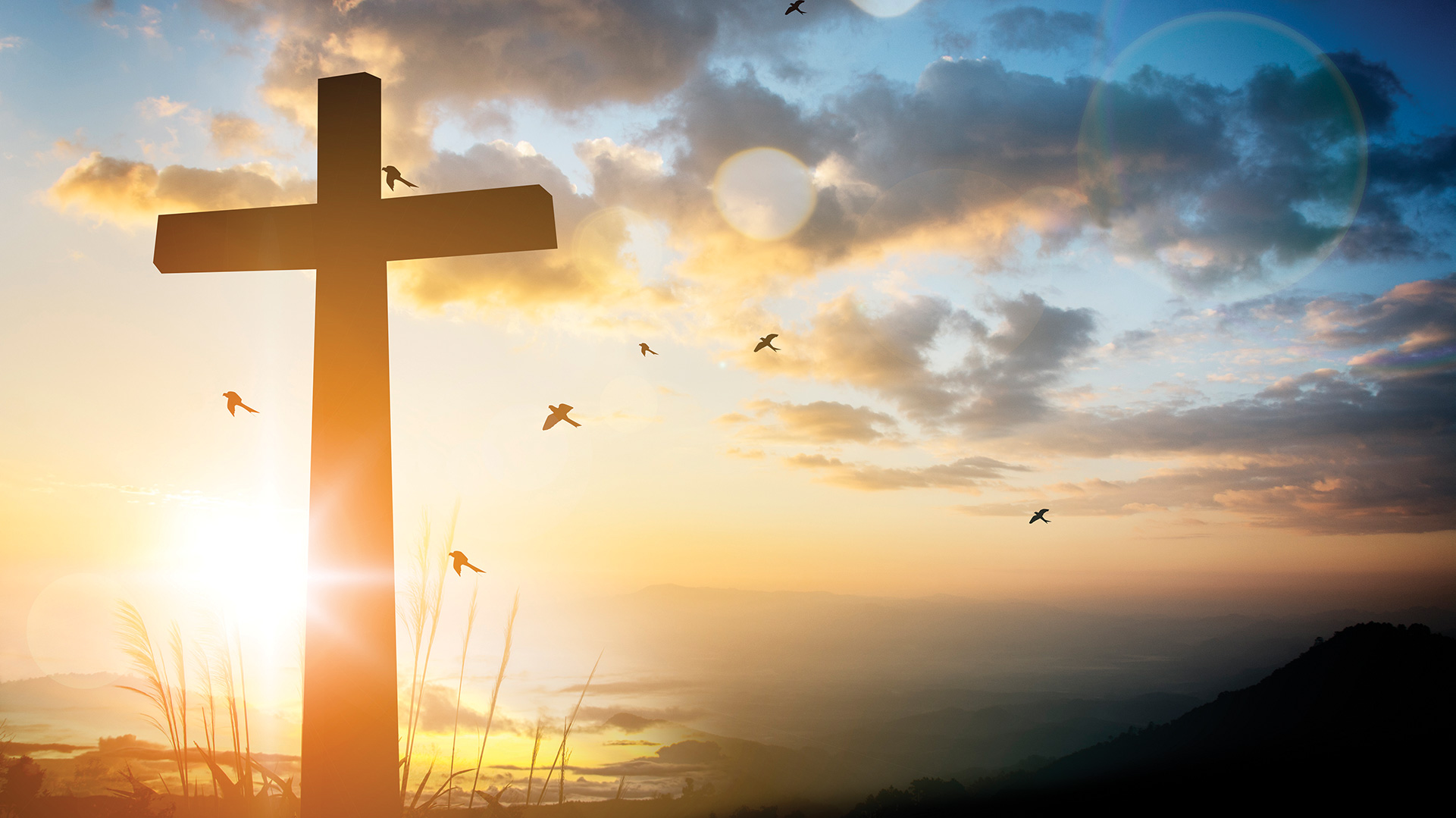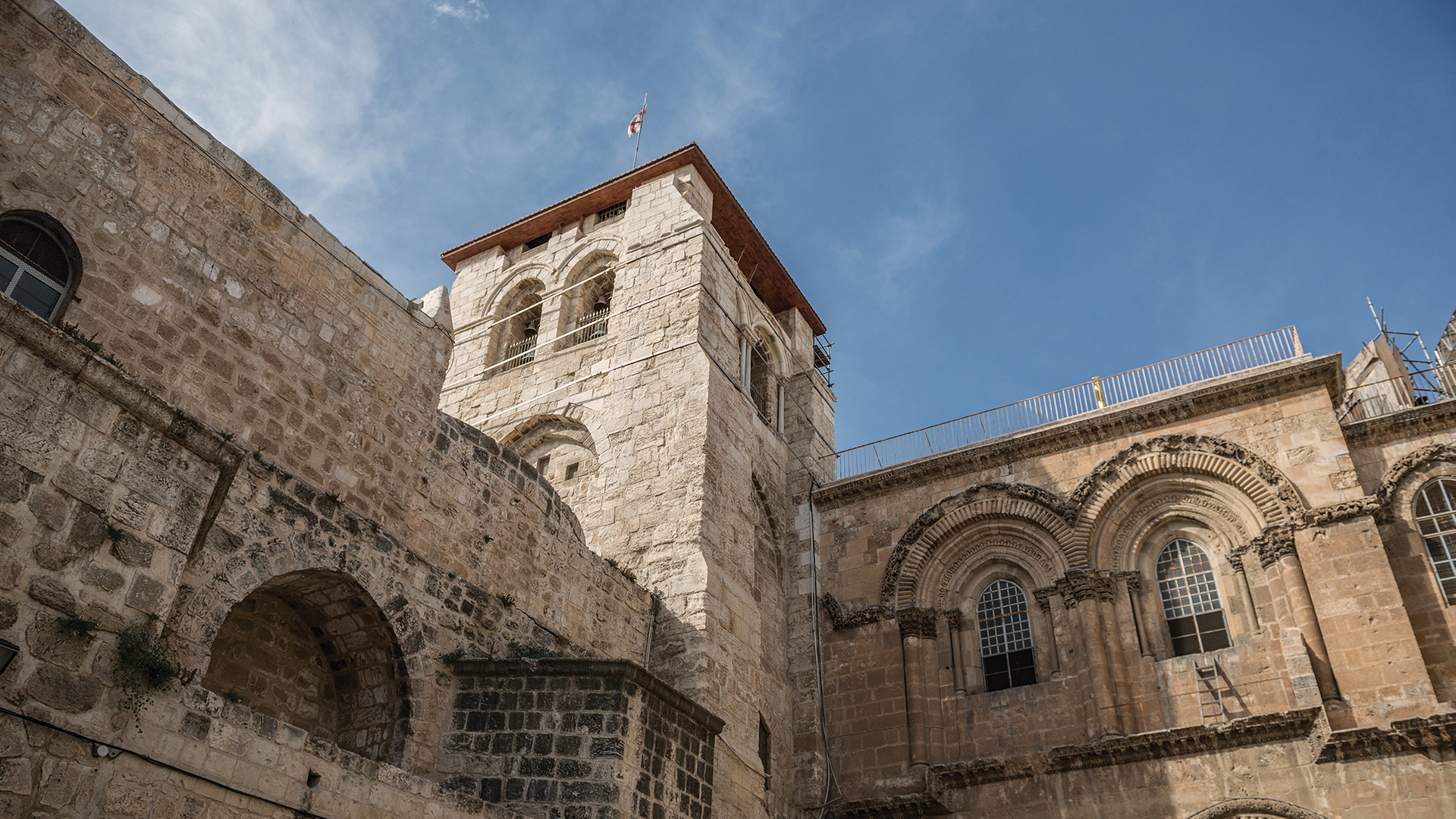
It’s called “the immovable ladder”. Small, aged and wooden, perched under a church window, the kind a tradesperson might use to reach a ceiling. For more than three centuries it hasn’t moved because no-one has been able to agree on what to do with it. Why? This is no ordinary ladder outside an ordinary church. This ladder has been outside a window of the Church of the Holy Sepulchrein Jerusalem since the 1750s.
Six of Christianity’s oldest Orthodox and Catholic sects are responsible for the management of this building, a working relationship set up under a complex agreement called the Status Quo, which dates back to the eighteenth century. Every decision relating to the church is shared among the parties, who must reach consensus agreement. Thus, the immovable ladder remains immovable, because the six custodians cannot agree on what they should do with it.
Each party to the Status Quo takes their share of responsibility for this building incredibly seriously. In 2002 a physical altercation broke out that resulted in the hospitalisation of 11 people—a Coptic Christian monk’s chair had intruded ever so slightly into the Ethiopian Orthodox Church’s space. Because of the tensions among these Christian groups, a Muslim family has historically been entrusted with keeping the keys to the church.
So, what is it about this church building that creates so much tension, renders church leaders powerless to make decisions, and requires members of an outside faith to intervene? Simply, this church is claimed to be the historical site of Jesus Christ’s death and burial (sometimes retired to as Calvary or Golgotha), the place of the cross and tomb of Christianity’s Messiah. Excavated by Emperor Constantine after his conversion to Christianity, the site has become a holy place for Christians of all denominations and divisions—be they Protestant, Orthodox or Catholic. Each year millions of pilgrims walk through the doors of the Holy Sepulchre Church to catch a glimpse of the site. Pilgrims from all walks of life and from all over the world come to light a candle, offer a prayer, pause and reflect on the event most crucial to every form and variation of Christianity.

A potent symbol
The Christian cross (or crucifix)is the most recognisable religious symbol in the world and for good reason. This symbol of Christianity is not just visible atop churches and cathedrals or in Christian art, but in homes, on national flags, in workplaces, in pop culture and even on bodies as tattoos, pendants and earrings. No matter whether it is the Greek cross (with arms of equal length), or the Latin cross (where the vertical arm extends longer than the horizontal), the cross has been a prominent symbol for centuries—persisting from the days of early christians to the present day. What other symbol is so recognised, so ubiquitous as the cross? Mega corporations like Apple, McDonalds, and Coca-Cola pay millions to marketing agencies to get that kind of brand awareness.
But what does the symbol of the cross mean? At its most basic level, the cross is a reminder of the story of Jesus. The cross is a powerful Christian symbol because it is the central feature of the salvation story; it represents the death and crucifixion of Jesus, the son of God, for the salvation of humanity. The symbol has existed for centuries, with evidence of Christians adopting it dating back to as early as the second century
But there is another part to the salvation story that gives the cross its power. Like Vegemite and cheese, left and right, or the loops and hooks of velcro, the meaning of the cross is nothing without the resurrection. God’s plan to reconcile humanity to Himself climaxed with the death of Jesus, but was ultimately fulfilled when He walked out of the tomb on Sunday. This plan of salvation was not just that Jesus would die and defeat sin, but that He would also overcome death.
Always part of the plan
The resurrection was a major part of the salvation plan from the very beginning. The Old Testament prophets foretold a coming Messiah who would defeat sin and death. The prophet Isaiah declared, “He will swallow up death in victory” (Isaiah 25:8, KJV) and Jesus tried to explain to His disciples on many occasions that His death wouldn’t be the final curtain. He declared, “I am the resurrection and the life. The one who believes in me will live, even though they die; and whoever lives by believing in me will never die. Do you believe this?” (John 11:25,26).
First century church leader Paul went even further to say that, without the resurrection, Christian faith is meaningless and salvation is unavailable: “If Christ has not been raised, your faith is futile and you are still in your sins” (1 Corinthians 15:17). Without the resurrection, the cross has no power.
To borrow a metaphor from Jesus Himself, think about a kernel of wheat. A wheat grain in your hand seems small, indifferent and of little significance. You could choose to eat the kernel or grind it down to flour, but its potential is much more than just a single grain; it holds future fields and generations of wheat. Though the kernel in itself is valuable and useful for food, if you bury it in the ground and walk away, by its own “death” it takes on a brand-new life and can literally feed millions. The kernel is an important symbol of the power and capacity of the wheat, but it is only once it is planted that its power is revealed (see John 12:24).

Furthermore, the cross only made sense to the disciples after the resurrection. When Jesus walked the earth, His followers were expecting Him to incite a rebellion against the Roman occupation. In their view, the predicted Messiah would overthrow the Roman empire who were their oppressors and restore the Jewish nation’s sovereignty over Israel. As Jesus was led to the cross to die His followers were understandably confused. What was the purpose of this great Teacher’s life if the whole movement was to end in His martyrdom? It wasn’t until the miraculous resurrection on the third day that Jesus’ death made any sense.
New life, new meaning
The resurrection of Jesus gave a meaning to the cross that His disciples could not see on crucifixion Friday. But witnessing their resurrected Lord transformed these men into a mighty force who changed history. Bestselling Christian author Tim Keller wrote in King’s Cross(2011) that “there has to be some explanation for how the cowardly group of disciples was transformed into a group of leaders”. The resurrection was the unfathomable, yet undeniable, evidence that Jesus Christ, among all the pretenders before and since, was the real Messiah. Jesus had risen, and therefore everything He had been saying to His followers was true.
But theresurrection of Jesus was not a one-time thing. The apostle Paul put it this way: “Christ has been raised from the dead. He is the first of a great harvest of all who have died. So you see, just as death came into the world through a man, now the resurrection from the dead has begun through another man. Just as everyone dies because we all belong to Adam, everyone who belongs to Christ will be given new life” (1 Corinthians 15:20–22, NLT*).
Just like the kernel of wheat buried in the ground, Jesus’ death gave birth to a new life for anyone who chooses to accept Him. Death is the reality for all of us, because sin entered the world through Adam. But now a resurrection—a new life—is available to all of us, because redemption is available to the world through Jesus. He came to this earth to live the perfect life we couldn’t and to accept the consequences of our sin: death. All we have to do is accept today and we too can experience new life, both now and beyond the grave.
Curious about some of the key beliefs of Christianity? Check out the other articles in our Fundamentals series to see if you can find the answers you need.
Lyndelle Peterson is an Adventist pastor and church leader in Melbourne, Australia, where she lives with her young and growing family.
* Bible verses marked NLT are taken from the New Living Translation, copyright © 2015 by Tyndale House Foundation. Used with permission. All rights reserved.






